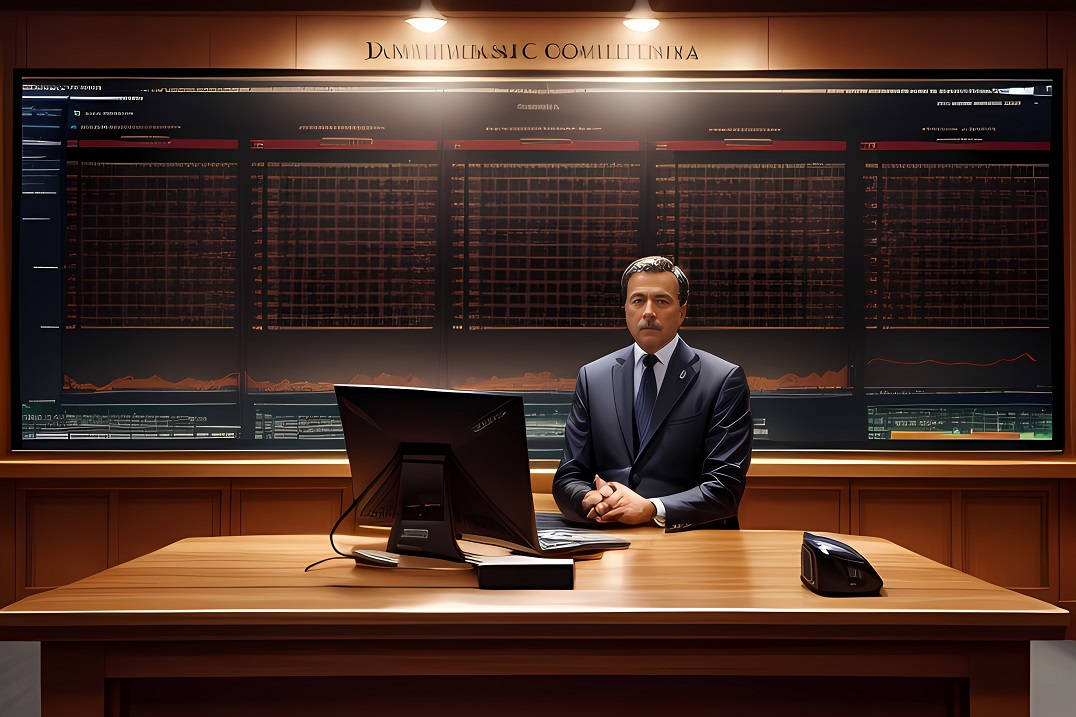Advantages of using cloud services order management system for whole enterprise business management in network

Cloud services order management system is a collection of current management technologies and management concepts. It is a software for enterprises to manage their employees' daily work and monitor their work effects. After all, the 21st century is the age of network economy and e-commerce information, and traditional management obviously cannot meet the needs of actual development. There is also a logistics tracking management function in cloud services order management system, through which the transportation and tracking of goods can be made more reasonable, and at the same time, the enterprise can maintain a close and organic combination with suppliers and customers. It can run through the entire process of the product, whether it is internal or external communication, it can provide great convenience for the enterprise. To a certain extent, it ensures the convenience of the enterprise's cargo transportation, reduces the transportation cost of the enterprise, and brings greater economic benefits to the enterprise. The small trader resource management procurement function needs to focus on procurement-related functions. For example: BOM distribution, one-click inquiry, supplier management. The configured and updated tens of millions fo price libraries support the realization of BOM instant report. What are the functions and advantages of cloud services order management system?
Cloud services order management system Solve the information flow problem in the process of enterprise operation, reduce information island behavior, improve quality and reduce cost, change the department-based concept in the enterprise, and enhance inter-departmental collaboration.
LongRiverTech cloud services order management system observes and manages the operation of companies from many different angles, such as: sales angle, customer angle, production circulation angle, product angle, etc., to achieve the optimal combination of corporate profit goals and to meet industry demand. Since LongRiverTech released its first ERP product in 2017, LongRiverTech has continued to invest resources in the continuous iteration and evolution of cloud services order management system. In 2019, the first enterprise version based on B/S web architecture was released, which supports cloud deployment and operation. LongRiverTech cloud services order management system is committed to helping the development of the Industrial Internet, Industry 4.0 and the new economy of intelligent manufacturing. LongRiverTech ERP is a one-stop ERP system for small and medium-sized enterprises, which can be personalized business customization, cloud platform deployment, etc. In 2021, LongRiverTech released the first cloud service brand "Hanju", providing a brand-new SaaS operating environment and business model for the release and service of subsequent ERP products and cloud services order management system.
LongRiverTech cloud services order management system uses BOM and process flow to construct the framework of production flow, realizes the processing and manufacturing management function of , and can meet the special needs of the industry of .
The one-stop information solution digital workshop solves the problems of production scheduling, labor reporting, process document issuance, production traceability, quality control, and decision-making analysis for manufacturing enterprises, and realizes the digitization and kanban of the manufacturing process and the coordination of workshop execution. Software similar to the resource management of housing construction engineering systems include: development of greenhouse engineering project management software system, construction engineering building intelligent digital project management software system, building intelligent engineering management software system, agricultural construction project management information system, construction real estate construction Enterprise management information system, real estate project management system, real estate project management software, real estate company project management system software. Multilingual management truly realizes multilingualism, and different languages can be set according to the geographical conditions of stores, branches, etc., and different languages can be realized in different regions. The material and part approval management system provides the material and part approval management function, which can meet the situation that the customer specifies that certain materials need to use a fixed manufacturer's brand, or the internal quality management needs of the enterprise. The e-commerce management system deploys online enterprises to realize the integration of online and offline enterprises. B2C is the abbreviation of Business-to-Customer, and its Chinese abbreviation is "Business to Customer". "Business-to-customer" is a mode of e-commerce, also known as commercial retail, which sells products and services directly to consumers. This form of e-commerce is generally dominated by online retailing, which mainly uses the Internet to carry out online sales activities. B2C means that enterprises provide consumers with a new type of shopping environment through the Internet - online stores, where consumers shop and pay online through the Internet. B2B refers to the business-to-business marketing relationship, which closely combines the enterprise intranet with customers through the B2B website, and provides customers with better services through the rapid response of the network, thereby promoting the business development of the enterprise (Business Development). Competition in the domestic apparel industry is intensifying, customers have more and more personalized needs, and order patterns are becoming more and more complex. In order to maintain a leading position in the industry and build an international business wear brand, enterprises must use information technology to transform and upgrade the management and production models of traditional industries, and change the original large number of manual operations. In order to adapt to the competitive environment of the clothing industry in the new era, it is necessary to use modern information technology to manage its clothing sales and inventory. Usually, financial managers, supply chain managers, and manufacturing managers will purchase and use services, certification, standard support services, pre-sales consulting services, professional technical services, professional business services, advanced support services, special services, exclusive services, Support, service support, product online community, and partner collaboration network to accelerate the deployment of business domain clouds and to move across multiple clouds.

Cloud services order management system Warehouse management functions include: warehouse goods, commodity inventory details, transfer order, inventory list, other storage and output, consumption and delivery documents, loss report, cost adjustment form, general application form (in plan), special application form Receipt (unplanned), receipt of goods into warehouse receipt, return of goods out of warehouse receipt. Cloud services order management system MES functions include: material, workshop, work group, process, section, step, task, BOM, cost accounting, production batch, production plan, work group schedule, material plan, production task, production flow, customer Incoming materials, receiving materials, returning materials, finished product warehousing, and shipping. LongRiverTech cloud services order management system retail return order includes: create retail return order, view retail return order flow, reverse retail return order, view retail return order documents, print retail return order documents, and export retail return order documents.
Retail does not matter old or new. What retail needs is the "evolution" ability of brand retailers. The core foundation is to comprehensively transform traditional offline retail through digital means, so that it has the same digital capabilities as online e-commerce, and finally builds Online and offline integrated digital operation and new consumer experience platform. The rapid rise of new retail "is not because the real economy is bad, but because your real economy is bad." Strategic cognition Mobile Internet era business model and new retail strategic cognition positioning Digital survival Digitalization is the basic viability of future commercial enterprises, retail innovation scenario thinking in the data age From single store profit to single store continuous profit closed-loop design of online and offline consumption experience Explosive product strategy starts from user touchpoints and intentional intelligence scenarios, and quickly builds a new enterprise-product-centric flow operation principle, logic, tools, methods and measures of actual digital operations to create an integration of "people, goods, and venues" new retail. Strategic cognition + actual operation + system execution = transformation + new model innovation of landing. OA system salary management includes: social security set account, social security tax rate, social security payment, my salary, salary query, salary report, salary distribution, salary set account, salary grade, salary item. The bill of materials is different from the product parts list that we are familiar with, mainly in the following aspects: (1). Each material on the bill of materials has its unique code, that is, the material number, which is very clear about the material it constitutes . There are no such strict regulations for general parts indicating fine watches. Parts schedules attached to individual products do not necessarily take into account the uniqueness of the material coding of the entire enterprise. (2). The hierarchical relationship of parts and departments in the bill of materials must reflect the actual assembly process. Some assemblies on the drawings may not necessarily appear in the actual assembly process, but may also appear on the bill of materials. (3). The bill of materials should include the raw materials, blanks and some consumables required by the product, and the finished product rate should also be considered. The parts schedule does not include materials that do not appear on the drawings, nor does it reflect the consumption quota of materials. The bill of materials is mainly used for planning and control, so all planning objects can be included in the bill of materials in principle. (4). According to the needs of management, several different shapes of a part, such as casting and forging blanks and processed parts, processed parts and repainted parts with different colors, should eb given different shapes in the bill of materials. Coded for differentiation and management. Parts schedules are generally not handled this way. (5). What materials should be listed on the material list is very flexible and can be completely defined by the user. For example, in addition to the raw material steel plate, a special mold is required to process a certain stamping part. When establishing the bill of materials, you can hang the mold as an outsourced part on the lower layer of the stamping part, and its quantitative relationship with the stamping part is the mold consumption quota. (6). The order of a master sub-component in the bill of materials should reflect the order of assembly of each component, while the order of the part numbers on the parts schedule is mainly for the convenience of viewing the diagram. The production management functions of the resource management system include: cost accounting, production files, bill of materials, production planning, material demand planning, production tasks, and material picking management. Provides the function of multiple routings for one product. For the same product, the cloud services order management system cloud platform provides a multi-process route arrangement function, which allows users to uniformly enter standard process routes and auxiliary routes into the system, which is convenient for the production department to choose during actual production. Product structure and design change management. Cloud services order management system cloud platform provides the function of optional parts for the salesman to determine and select some optional parts when receiving orders, and provides multiple comment fields for inputting special requirements. And it provides the function of EBOM (engineering BOM) for the research and development department, that is, it is convenient for the research and development department to manage engineering BOM, and it can share data and convert each other with the official BOM. Cloud services order management system cloud platform system provides single-level, multi-level, and last-level material usage lists (forward expansion) and single-level, multi-level, last-level expansion material usage lists (reverse expansion), multi-level query or list operations , it is convenient to understand the products that may be affected before the BOM change, and avoid some unnecessary mistakes. It also provides the function of substitute materials to solve the problem of some material substitution in the production process, effectively utilize the inventory, and better solve the problem of material shortage. In view of the characteristics of frequent engineering changes, the cloud services order management system cloud platform system provides engineering change operations. Through the engineering change operation, the historical version change records can be traced, and the change voucher and list can be printed, which facilitates the management of engineering changes. And provide BOM expected sluggish analysis form to assist the research and development unit to prevent material sluggishness caused by engineering changes and achieve prior control. The resource management management system is oriented to growing small and medium-sized enterprises, helping enterprises to manage personnel, wealth, goods, and stores. It is modeled on the needs of small and medium-sized enterprises, and is really suitable for small and medium-sized manufacturers, brand operations, agents, wholesale, monopoly, counters, franchises, stores, etc. Various business models. Customized clothing industry, designed and produced according to customer requirements. Generally speaking, customers are used to customizing clothing in the second half of the year. This has caused the clothing company's annual output to be very unbalanced. It is necessary to better regulate production, balance output value, control delivery deadlines, and straighten out internal processes. The internal production mode of the enterprise needs to be changed. The traditional manual input and manual data transmission cannot obtain timely and accurate reports required for leadership decision-making. In the later stage of production, for example, the data information required in links such as logistics, delivery, and quality inspection are all allocated and expanded by the system. All information must be accurate from the source of data entry, so that the follow-up work can ensure that the error rate is reduced, thereby reducing costs.
Small and medium-sized enterprises focus no production and processing to drive upstream procurement and downstream order management. The conventional cloud services order management system satisfies the large-scale production management of batch products. Mass-produced products with a high degree of standardization can quickly reach saturation through large-scale expansion, leaving a lot of room for growth in non-standard orders that require individual customization. For more innovative non-standard orders, it is increasingly dependent on the auxiliary management of computer systems to cope with the explosive growth of business data. LongRiverTech cloud services order management system account management includes: our account and counterparty account. For import and export trade, you can use the cloud services order management system report statistics function to conduct statistical inquiries: payment details, container details, consignment receivables, consignment summary, consignment cooperation cabinets, import and export sales reports, sales reports, and sales details. LongRiverTech cloud services order management system supports summary by sales company, supplier, product and origin. LongRiverTech cloud services order management system processing and manufacturing includes: BOM configuration, processing cost sheet, assembly and disassembly sheet, and product valuation adjustment sheet. LongRiverTech cloud services order management system sales return order includes: create sales return order, view sales return order flow, write off sales return order, approve sales return order, view sales return order documents, print sales return order documents, and export sales return order documents.

Based on the management structure system of multiple operation centers, an integrated management system with supply chain, production management, and financial integration as the core, and seamless integration with HR, BI, OA, etc. Has been constructed. Fully integrate internal and external information resources at all levels, links and aspects of the operation and management of the enterprise, realize the high sharing of information resources and tap their potential, and greatly shorten the feedback time from the original information to the decision-making process. Communication with the grassroots and various functional departments has become faster and more direct, greatly improving the level of operation and management. The function of multi-unit of measurement and mutual conversion of inventory solves another problem for enterprises in material management. Cloud services order management system has various modules such as invoicing, production, customer relationship, finance, and office system. Comprehensively help enterprises manage all businesses, users do not need to purchase financial, personnel, office and other management systems separately, allowing customers to achieve great things with a small amount of money. BOM information is used in MRP II/resource management system for MRP calculation, cost calculation, and inventory management. BOM has various forms, which depend on its use. The specific uses of BOM are: (1). It is the basic basis for computer identification of materials. (2). It is the basis for planning. (3). It is the basis for supporting and receiving materials. (4). Track the processing process according to it. (5). It is the basis for procurement and outsourcing. (6). Calculate the cost according to it. (7). It can be used as a quotation reference. (8). Carry out material traceability. (9). Serialize, standardize and generalize the design. Perfect outsourcing management. Cloud services order management system cloud platform not only provides outsourcing work orders for product outsourcing processing management, but also provides process outsourcing functions. For outsourced product processes that do not require inventory management, they can be directly entered into the production line, which avoids inventory management. Trouble, but also correctly handle accounts.
In other words, let cloud services order management system assist managers to easily control the whole process of work. There is no management without process and details, and the process and details are often beyond the scope of human energy and ability, but cloud services order management system can easily do it.